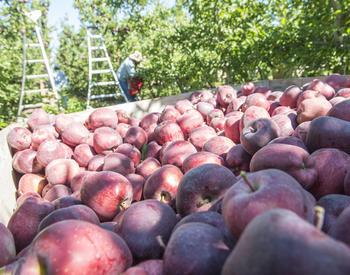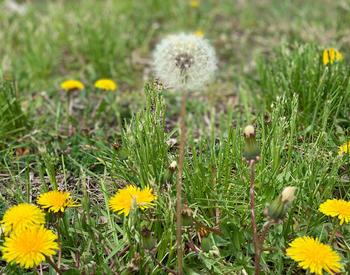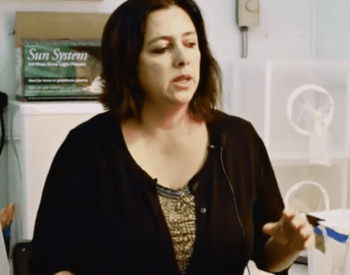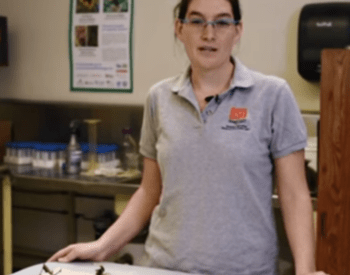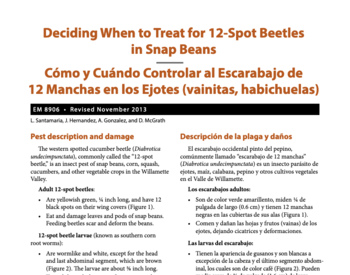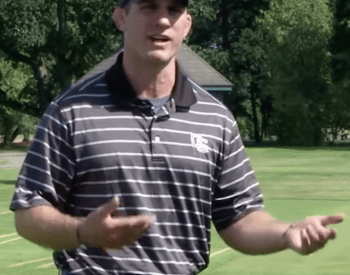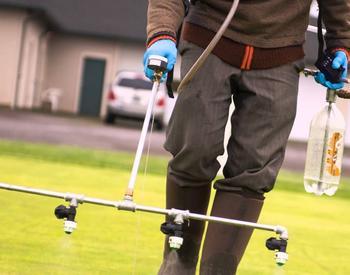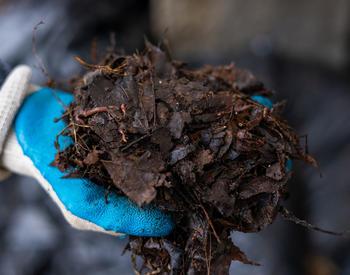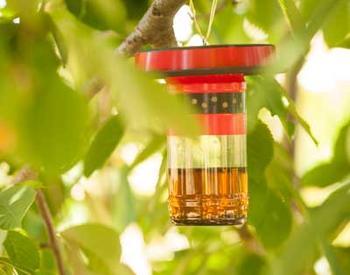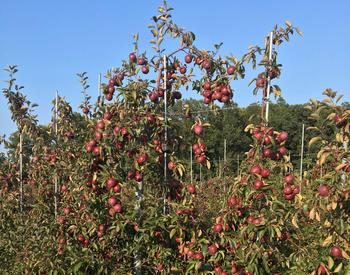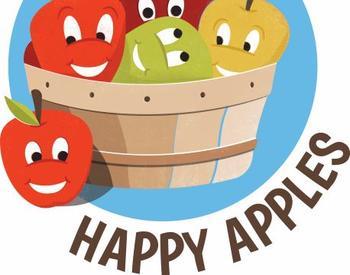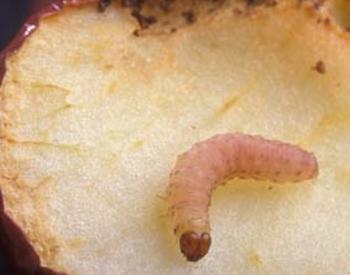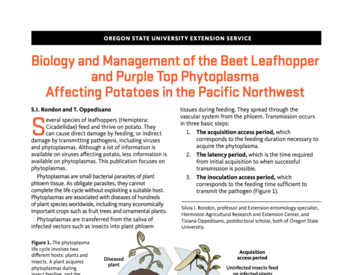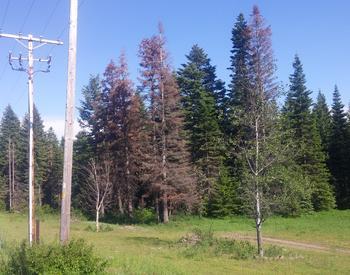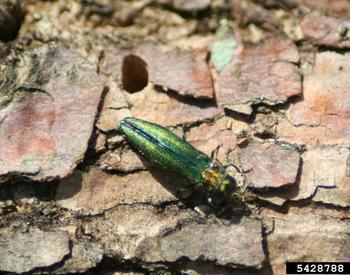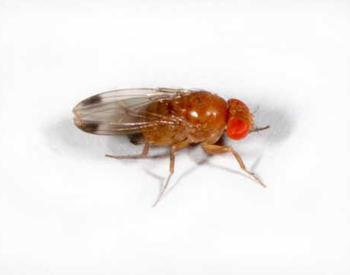You may have heard of IPM before but are still wondering, what really is IPM and what significance does it have with growing fruit crops. Quite simply IPM is a pest management system that brings together many different methods or systems to control pests. Many of us have used chemical pesticides to control pests but are not aware of biological and cultural methods or systems that also work well, and have a lesser impact on non target organisms, human health, and the environment.
How does IPM achieve these important goals? By focusing on preventing problems, monitoring pest populations, identifying pests, and choosing a combination of tactics to keep pest populations at an acceptable level.
A good IPM program decides if, when, where, and what mix of control methods are needed. And remember, using diverse control strategies help to control pest resistance, pest resurgence, and pest replacement.
Pest resistance is the genetically inherited ability of an organism to evolve or select strains that can survive exposure to pesticides formerly lethal to earlier generations. Resistance is usually caused by repeated use of the same chemical on the same crop. For example, if the only fungicide you ever use is copper, you are selecting for a resistant strain every time you spray. When planning a spray program, alternate products that do not contain the same active ingredients, after one or two sprays.
Pest resurgence and pest replacement can occur when you are spraying broad spectrum insecticides, like most organo-phosphates, on a two or three week schedule without monitoring pest populations with pheromone traps. You are targeting codling moth but are also killing beneficial insects that control other pests. Before long a secondary pest outbreak occurs. Leafminers, leaf hoppers, and pear psylla can all become a pest for apple and pear trees when the natural predators are killed.
Here are a few principles of IPM to follow.
- There is no silver bullet. Use several complimentary control practices to increase the long term stability of your landscape or orchard. Example: To control apple scab, prune trees to enhance air movement, rake up or mow leaves to remove disease innoculum, use a timely spray of fungicide.
- Tolerate low numbers of pests. Low pest levels help to maintain predator populations. Learn threshold pest levels where damage starts to get serious. Example: When you catch 5 codling moths in a pheromone trap in one week you should apply your insecticide.
- Treat the cause of the pest outbreak not the symptoms. Detailed knowledge of a pest is necessary to tip the scale against the pest without disturbing the ecosystem of your orchard or landscape. Example: If you over fertilize your fruit trees with nitrogen, your trees will produce lush excessive growth that is very attractive to aphids. By balancing your fertilization you will produce healthy growth that is not as attractive to the aphids.
- If you kill the natural enemy of a pest you inherit their job. Naturally occurring predators, pathogens, and parasites will keep many pest populations in check.
- Enhance the environment for beneficial insects by having flower gardens and some unmowed wild areas near your orchard.
- Stop using broad spectrum pesticides like organo-phosphates and carbamates and start using softer more targeted products.
- Example: Organo-phosphates and carbamates include products like Sevin, imidan, and diazinon. Choose new types of products like Cyd-X a granulovirus that kills codling moths when ingested, Spinosad, a product derived from the fermentation of soil bacteria that kills insect larvae when ingested, and Surround, a clay compound that can irritate insects and drive them away from your crops. These newer products are less toxic to mammals or the environment.
- Remember, pesticides are not a substitute for good gardening. A healthy plant will defend itself better than a stressed plant. Create healthy soil, fertilize when needed, water your trees deeply several times a month from June until September. Protecting your trees and crops is the goal, not killing pests.
IPM uses a number of control systems. Cultural, mechanical, biological, and chemical are all important if used in combination. Always start with the least toxic controls first and add others if necessary to keep pest populations below the damage threshold. Here are a few examples of each type of pest control.
Cultural controls
- Prevention, don't move diseases and pests into your landscape
- Tillage, mowing, vacuuming, burning
- Resistant varieties of crop plants
- Manage fertilizer and irrigation
- Sanitation of equipment
- Healthy soil (cover crops, compost)
- Trap crops
- Plant your crop in the right place
Mechanical controls
- Spraying with water
- Pruning
- Tree covers or nets
- Kaolin clay
- Hand picking insects
- Metal barriers or sticky barriers around tree trunks
Biological controls
- Beneficial insects; know the good guys from the bad guys
- Know the stages of pests
- Microorganisms are used against pests (Bt, Spinosad)
- Monitor pest populations with pheromone traps
- Provide food, water, habit for beneficial insects
- Attract vertebrates to yard (bats, snakes, birds, frogs)
Chemical controls (compatible with IPM)
- Use the least toxic chemicals first
- Horticultural oils, soaps, dormant oils
- Bt, Spinosad, Kaolin clay
- Organically registered insecticides (Rotenone, pyrethrum, Neem)
- Organic Fungicides (sulfur, copper, potassium bicarbonate)
- Other fungicides
- IGR (insect growth regulators)
- Pyrethrins
- Use the right rates, calibrate sprayers, alternate your products
You can find products that are compatible with IPM programs at your local farm stores. If you would like to contact some manufacturers directly here are a few IPM catalogs and websites:
- Gempler's IPM Buyers Guide phone: 800-874-4755
- Trécé for pheromone traps phone: 831-758-0204
- Alpha Scents pheromone traps phone: 971-998-8248
- Suterra pheromone traps phone: 1-866-326-6737
- Rincon-Vitova Insectaries for beneficial insects
- Nature's Control for predator insects phone: 541-899-8318
